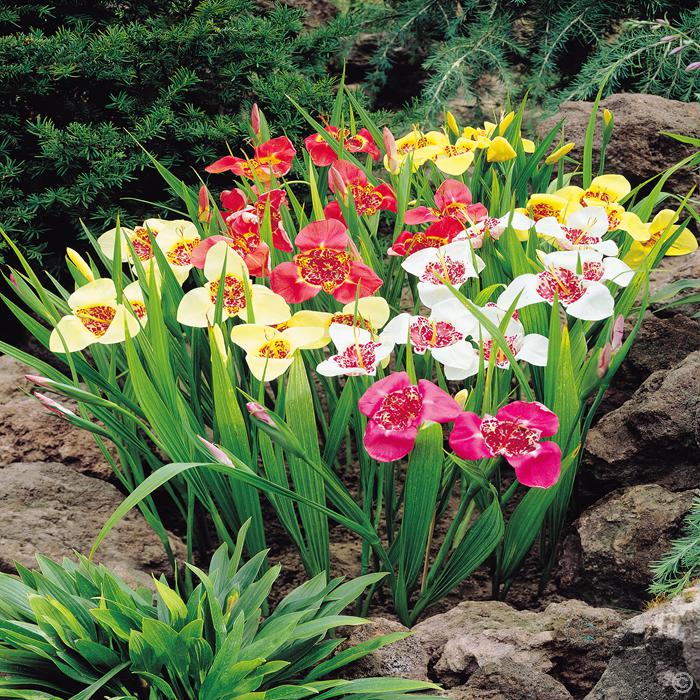Tigridia pavonia: The Tiger Flower
By: Lauren M. Liff for Dabah Landscape Designs
Have you ever seen something so beautiful that it literally begged you to stop what you were doing and stare in awe? The Tigridia pavonia is one of those breathtaking flowers that you can’t help but stare at. Known more commonly as the Tiger Flower, it truly is a wonder to behold in a late summer garden. With similarities to the Daylily and Gladiolus, the tiger lily comes in a vast range of colors that can make your jaw drop.
With brightly colored blossoms sitting atop a slender stem, the Tigridia pavonia can produce several flowers per stalk. The flowers are two-toned with combinations of pink, white, red, orchid yellow or orange and a unique contrasting center point. The flowers can be 3 to 6 inches wide and consist of three large one-color petals surrounding 3 small spotted petals. These smaller petals surround a similarly patterned center cup.
The stems are surrounded by sword-shaped leaves that stand upright similar to that of Gladiolus. The interesting characteristic about these delicate blooms is that that they only bloom for a single day. However, since the Tiger Flower produces multiple blossoms per stalk, the flowering period technically can last up to several weeks. You can also cut back the first flowers about six inches down the stem to aid them in re-blooming.
Tigridia will thrive in areas with well-drained soil and full sun. It has been known to tolerate part shade in a hot climate area. Once established, the Tiger Flower is drought tolerant and deer resistant. It can be used in the landscape as a border or a massing plant; you can also put them in containers as an exotic accent piece. The stems are delicate and the foliage is light so planting it among low-growing plants or groundcovers will work the best.
The bulbs should be planted in the spring and it’s recommended to plant 3 bulbs to a group for that extra impact. When planting these bulbs, set them 3 inches into the soil and about 5 inches apart – make sure to water well throughout the season. For such an astonishing plant, they are incredibly easy to grow! The bulbs do produce offsets and will eventually form a large clump. You can divide them every 3 years or so to keep them maintained.
The beauty of this flower is enough to make your heart skip a beat, seeing it in bloom is like falling in love at first sight. For a plant as beautiful as this, its hard to believe that it’s so simple to grow and virtually maintenance free! Turn your already beautiful garden in to a showstopper by planting these bulbs next spring. Your garden will surely be the talk of the town, especially during the end of the season after the early and mid season bloomers have faded – the Tiger Flower is absolutely the diamond in the rough!














